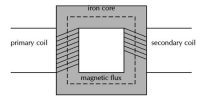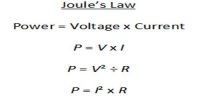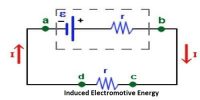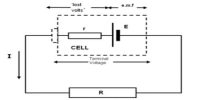The electricity flows through a conductor due to the potential difference between the two terminals. The potential difference between any two points is defined as the amount of work done to carry unit positive charge from one point to another of a circuit. When a dry cell is used in a torch, the electrical energy provided by the dry cell is converted into light and heat energy. The conservation of energy is maintained in this process of transformation of energy. The amount of energy converted across the light bulb for migration of unit positive charge is the potential difference between the two terminals of the bulb. Therefore, the potential difference between the two points of a circuit is defined as the amount of electrical energy converted to other forms of energy (e.g. -heat, light) when unit positive charge migrates between the two points. If W is the amount of electrical energy converted to other forms for migration of Q amount of charge, then the potential difference between the two points is,
V = W/Q
The SI unit for potential difference is the same as that for electromotive force. That is volt (V). The potential difference between the two points will be 1 V if 1 J of electrical energy is converted to other forms when 1C positive charge flows between the two points.
The voltmeter reading is the potential difference between the two ends of the bulb or of resistance during the current flow. Now compare the values of the measured electromotive force and potential difference. You will observe that the value of E is larger than that of V.













